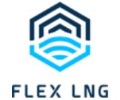Worst is over for the dry bulk market, but the pain will remain for years to come, says BIMCO Chief Analyst

The current demise of the dry bulk market isn’t one to go away anytime soon. That doesn’t mean that it can’t improve, with all ship classes expected to cover their operating costs by May. Meanwhile, demolition activity isn’t enough, at least thus far, to offset oversupply of tonnage in the dry bulk market. It’s one of the reasons behind the downfall of the market in the past few months. In an exclusive interview with Hellenic Shipping News Worldwide, BIMCO’s Chief Shipping Analyst, Mr. Peter Sand, said that the organization expects a demolition level for the dry bulk fleet at 19m DWT for 2015, while already 8m DWT of bulkers have been scrapped. However, the market fundamentals remain negative, despite increasing demand during the current quarter. As Mr. Sand puts it, “we need multiple years of demand outstripping supply to turn the tables. The fact that demand may be fading somewhat now with China in an economical transition phase is not making prospects any better”.
Traditionally, the second quarter of the year signals the rebound of the dry bulk market, at least in terms of demand, with the grain/soya trades of South America kicking in. What’s your estimates about the demand side of the equation in the market going forward?
BIMCO is comfortable that demand for dry bulk ships is improving in Q2 as compared to Q1. Primarily due to increased volumes of soya and iron ore getting seaborne out of South America. Most focus will be on Brazil, with Argentina in a supporting role as soya exporter. It is positive for shipping volumes that Argentina is on track for a record harvest with 5% gathered already and the combined soybean production for Argentina and Brazil, as estimated by USDA, is to hit an all-time high at 150 million tonnes.
Nevertheless, we have to remain patient as regards to increased iron ore exports out of Brazil. In our recently published dry bulk market report we stated that Australia “won the battle” of increased sales to the Chinese in 2014. Additionally, “BIMCO expects that they will not let go of the lead in 2015, at the expense of long-haul shipping demand from Brazil.” Insight provided by Commodore Research & Consultancy supports this view – unfortunately.
For the full year, BIMCO expects demand a bit lower than estimated at the end of 2014. We are currently looking at 3-4% growth down from 4-5%. Key importer, China, is the main culprit behind this revision.
With the market plunging to all-time lows during February, do you think that the worst is behind us? Would you say that this time around, the main reason behind the dry bulk market’s demise is low demand or tonnage oversupply, which was deemed as the main “culprit” in the past?
The pain will stick around for a number of years even though the worst is behind us. The second dry bulk recovery in recent years from the trough in 2012 lasted until the autumn of 2014 where it became apparent how fragile it was. Mostly brought down by overcapacity, but also a tendency that the demand side would not remain as strong as it had been for the past decade or two. Key trigger behind this is of course the decline in coal imports from China, the still lack of nickel ore and bauxite imports and the fact that most importers (excl. China) is still not back at levels reached in 2007-2008!
If you try to look back on the big fleet growth years of 2009-2012, it grew by an annual average of 13.1%. All of those years the overcapacity increased. In 2013-2014, the fleet grew by an annual average of 5.1%, which is much more balanced, but it does not change the fact that the overcapacity is still here. We need multiple years of demand outstripping supply to turn the tables. The fact that demand may be fading somewhat now with China in an economical transition phase is not making prospects any better.
Can India support the market in a few years’ time, much like China did since the early 2000’s?
India is becoming more and more important to the dry bulk market, but they are still not to be seen as “a new China”. The two nations are very different and their development paths not alike. Unleashing the potential of India will be done at slower pace providing a solid level of demand growth going forward.
Given the challenging conditions which have prevailed so far in the market, when do you expect to see rates back above operating expenses, if not for all, at least for the majority of vessels?
BIMCO forecast freight rates for all dry bulk ships to remain below USD 9,000 per day for March-May. The trend is seen up – meaning that they should all be above OPEX cost levels in May. That is if we assume OPEX between USD 4,500 per day for the Handies going up to USD 7,500 for the Capes.
Looking at OPEX alone means Handies, which is making USD 5,766 per day in the current market, and Supras, which is making USD 6,772 per day, is getting OPEX covered. Panamaxes and Capesizes are not.
Beyond OPEX, you need to look at capital costs too. Interests, repayments, and/or depreciations on the fleet often means more to profitability than OPEX does. So in order to be “back into the black” all costs must be covered – freight rates must reach OPEX times two or three, as a rule of thumb, to earn money for supporting a going concern.
How important has the fall in bunker prices been for shipping companies, given the reduction of their operating costs? Would we have seen more bankruptcies in the segment, according to your view?
Cutting the bunker costs in halves is definitely a sizeable cost reduction on the voyage related expenditures. A cost reduction for the one paying for the fuel, that is. So who does that?
Mostly the spot operators working on a USD per tonnes basis, paying the fuel themselves, reap the benefits. So reaping the benefits of a falling cost item is a matter of negation skills too. In case your ship is out on charter, the charterer gets the cost reduction, as the owner is not paying voyage related expenditures. OPEX is only impacted to a minor extent as the price for lubricants may follow the oil price down somewhat.
Will the Capesize segment lead the way “out of the mud” once more?
Without doubt. Why? Because the demand picture as we see at BIMCO is very much biased towards the larger ship sizes of Panamax and Capesizes, whereas the demand situation for the two smaller segments is more slow growing. Bear in mind though that the current drop in rates was also lead by Capes, indicating a “normalized” market condition, but as Capes also took the deepest dive it becomes clear that overcapacity is still significant also for Capesize segment.
In this market environment, which options have ship owners to cut their losses? Out of demolition, slow steaming, or lay ups, which is the preferable choice at the moment?
All options are open, but the only significant one and most widely applied is slow steaming. Fortunately also the most effective one to counterbalance oversupply. Downside however is that is has a temporary nature as compared to demolition of a ship, which has a permanent effect on fleet growth, nominal and actual.
Demolition is also being used as a tool to turn around fortunes. The poor condition of the markets means BIMCO is forecasting total demolition of dry bulk ship capacity to go higher than in 2014. Our estimate is 19m DWT for 2015 with some 8m DWT scrapped already.
In terms of investments, have asset prices adjusted accordingly either in the S&P or the newbuilding markets? Is it a good time to invest in modern tonnage, price-wise?
Newbuilding prices have not hit the floor yet; they are still by some distance higher than in 2012. Second hand prices have tumbled the most with all but Capesizes now below the 2012-lows. Capes being on par. Second hand prices has gone down by 40% over the past year, with older ships taking the biggest hits. Is now a time to invest, price-wise? Well, the return on investment seems to be potentially higher elsewhere. Despite many reasons to pick a newbuilt instead of a second hand – the eventual arrival of a more balanced market would all other things being equal be postponed by adding more tonnage to the market without removing the equivalent capacity. Should you be in need of extra tonnage, the market would be better off if those ships are found in the second hand market.
Nikos Roussanoglou, Hellenic Shipping News Worldwide

 Hellenic Shipping News Worldwide Hellenic Shipping News Worldwide, Online Daily Newspaper on Hellenic and International Shipping
Hellenic Shipping News Worldwide Hellenic Shipping News Worldwide, Online Daily Newspaper on Hellenic and International Shipping





















 PG-Software
PG-Software